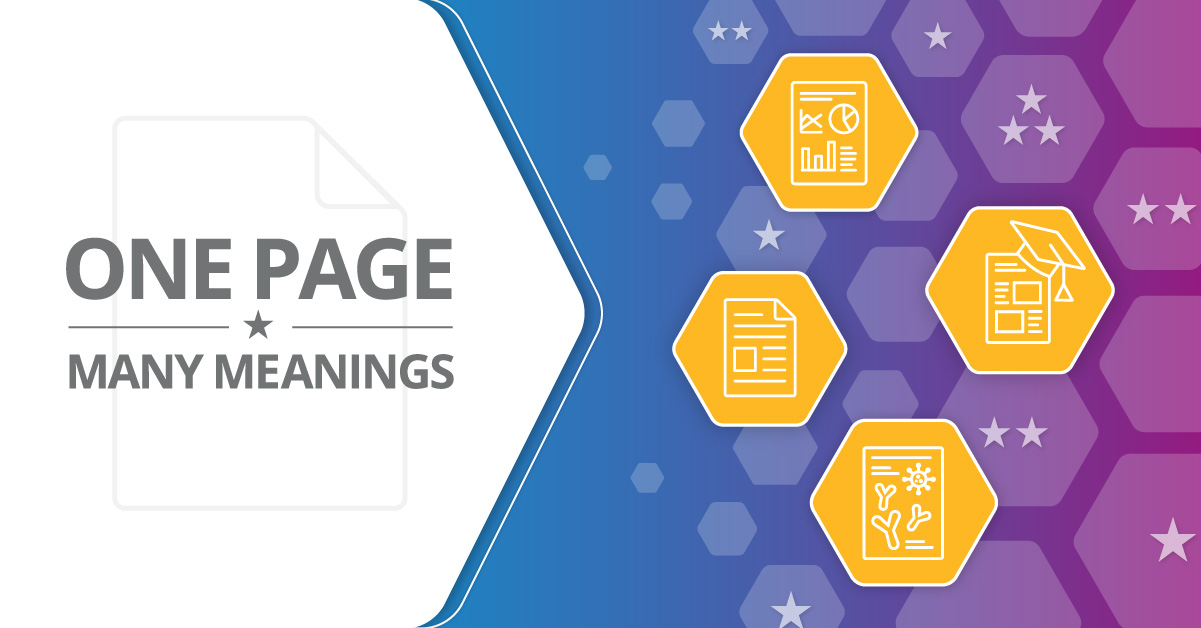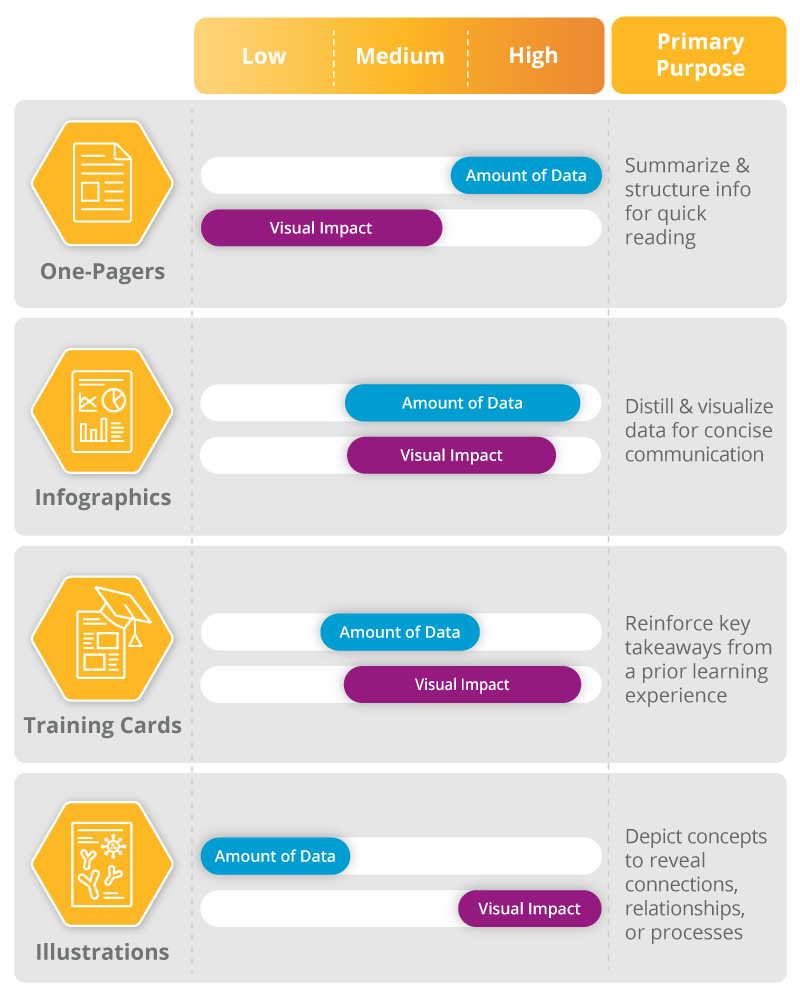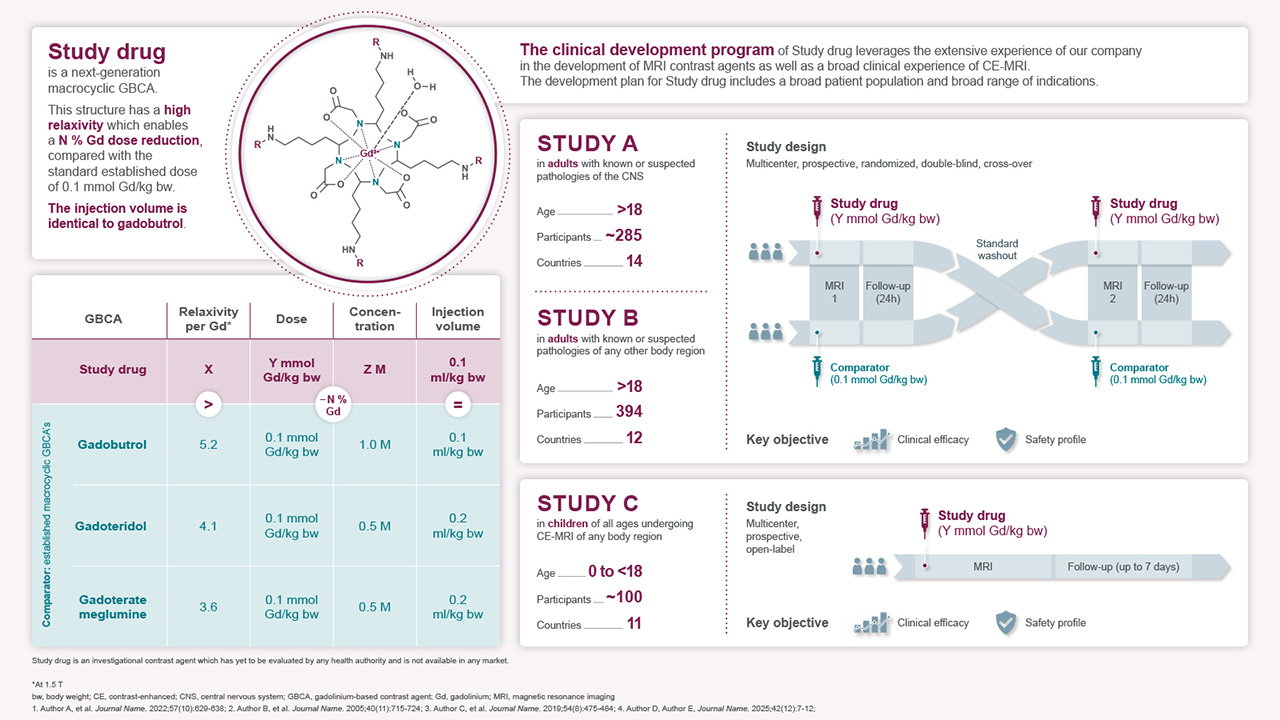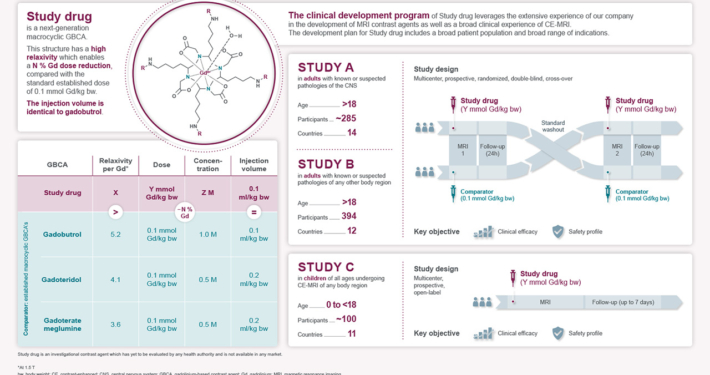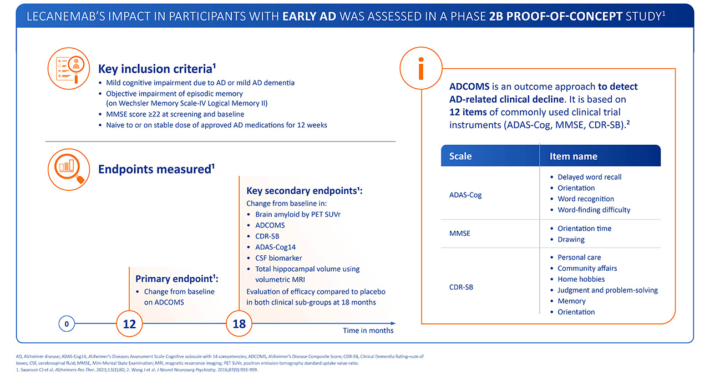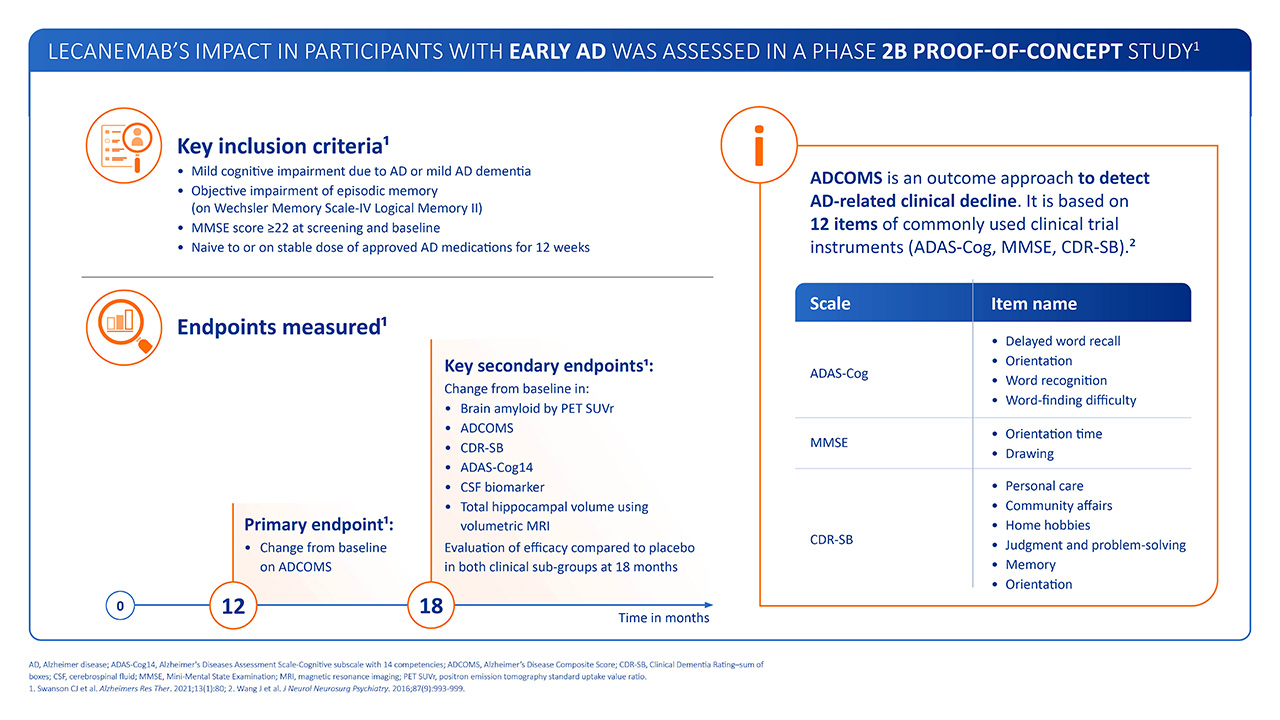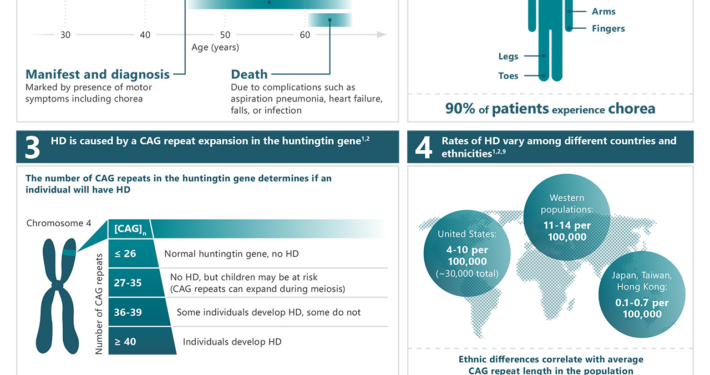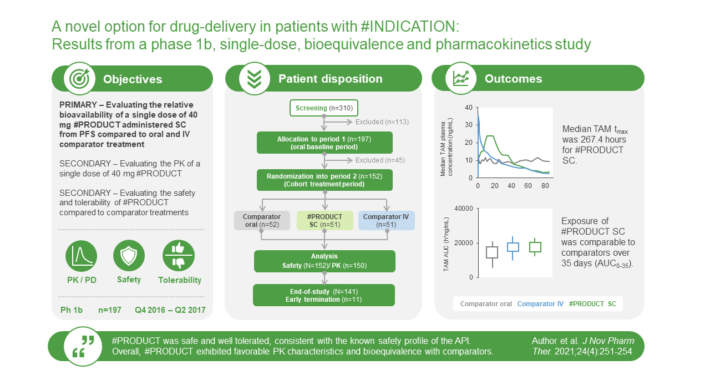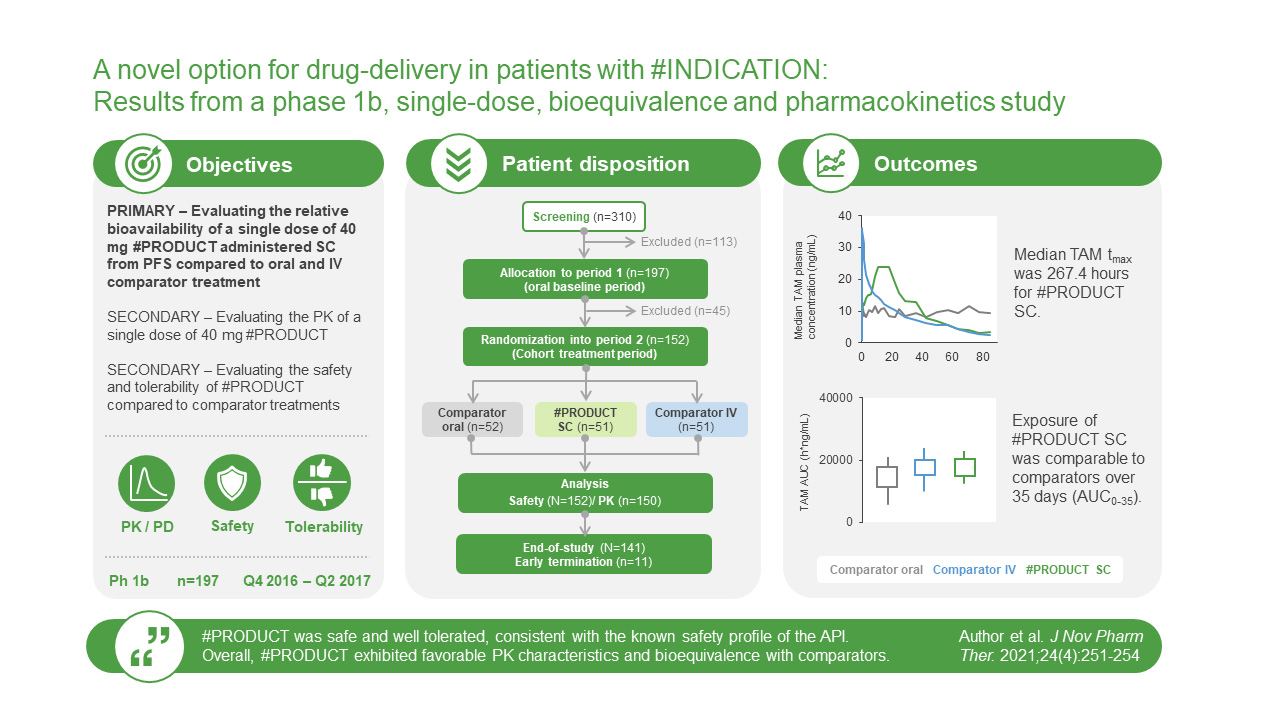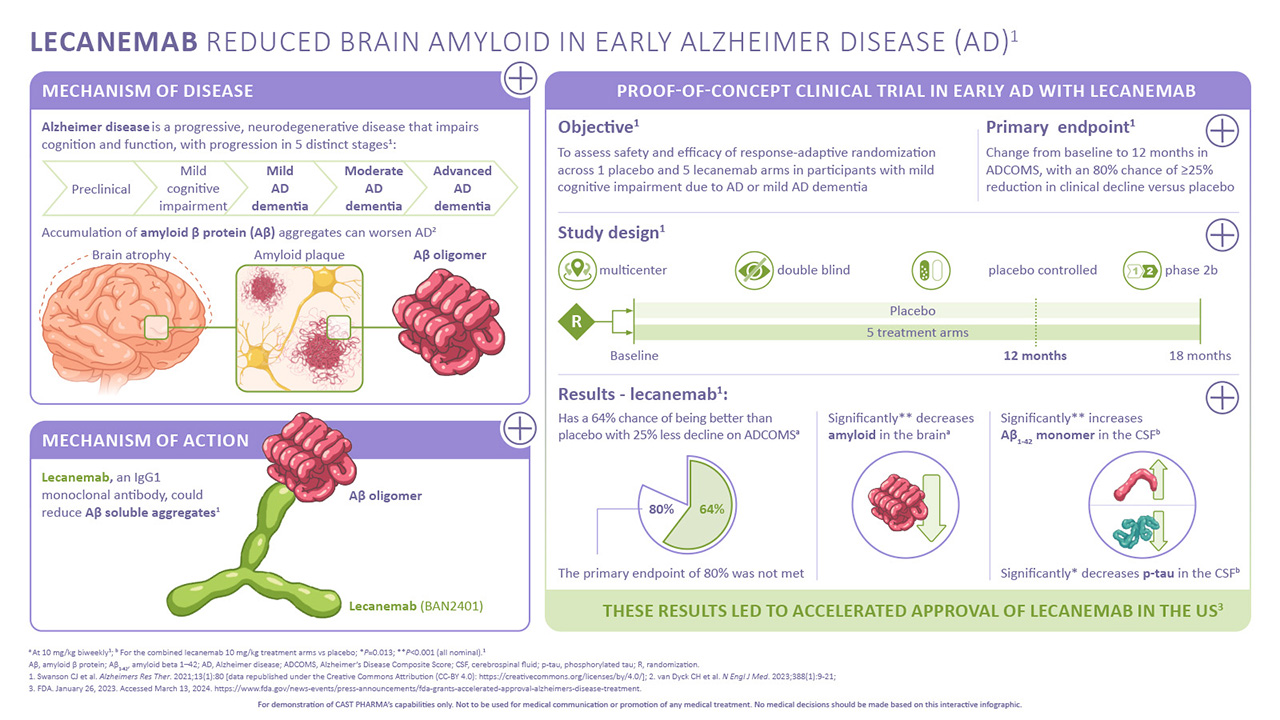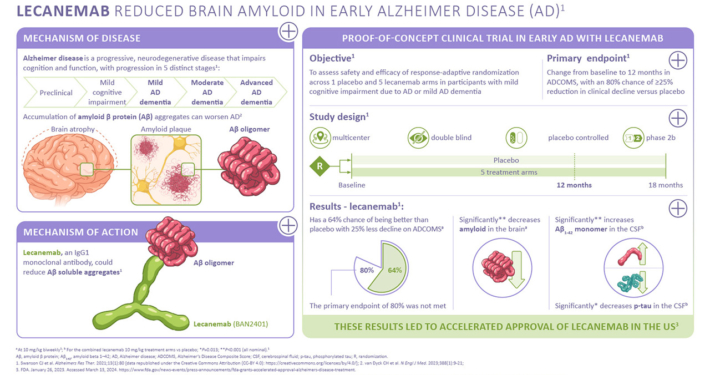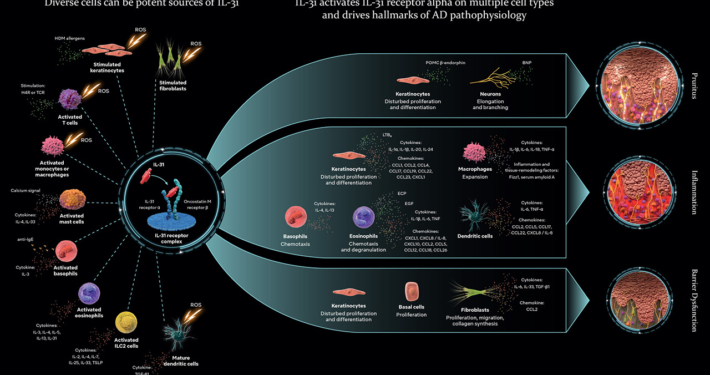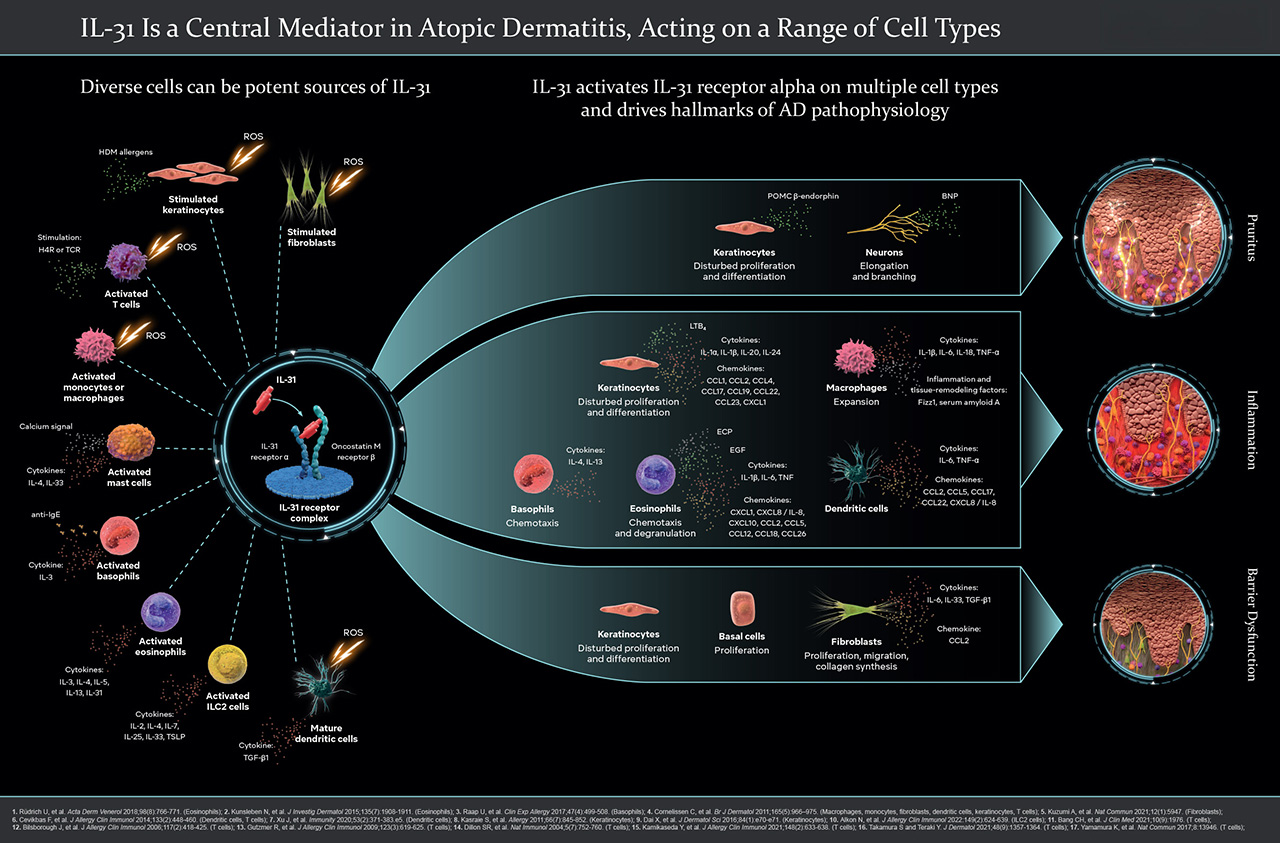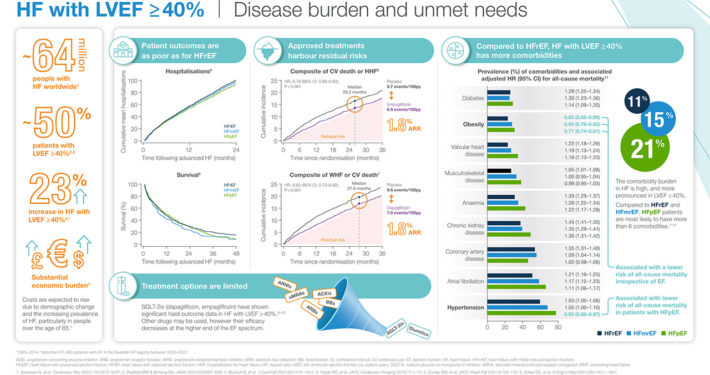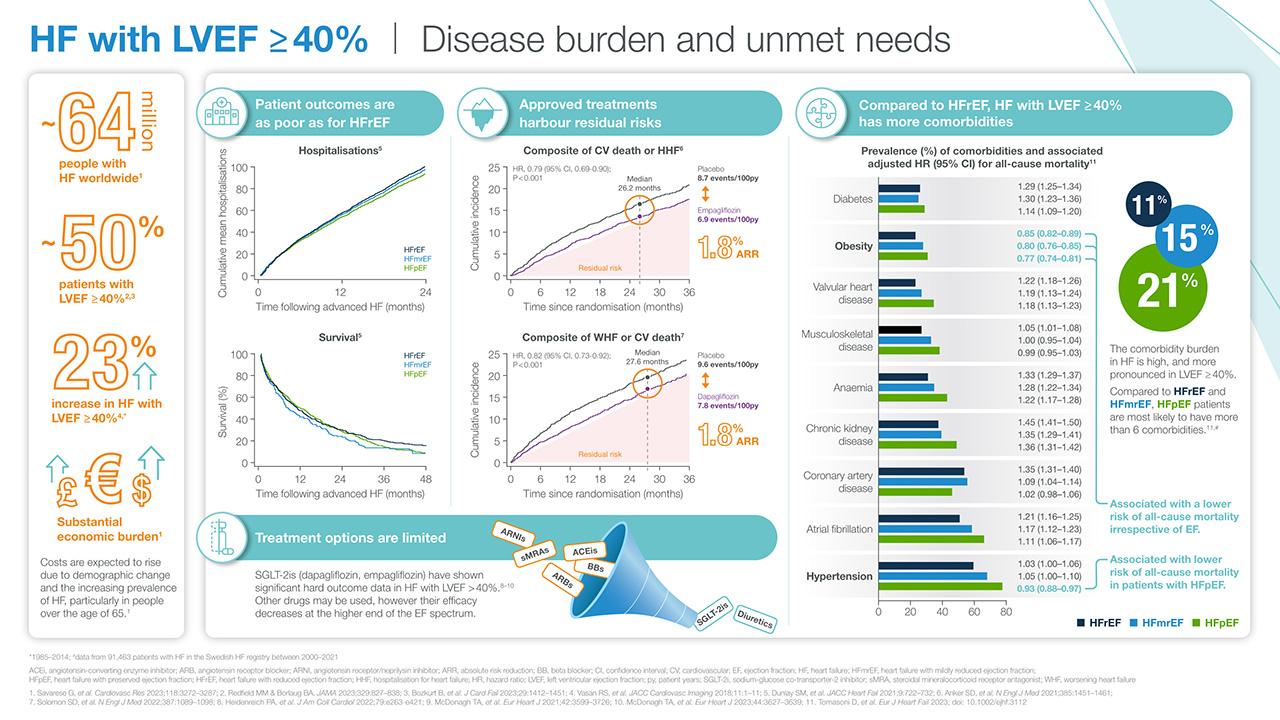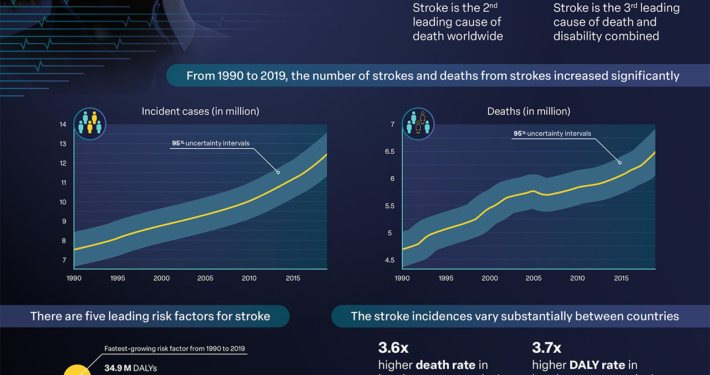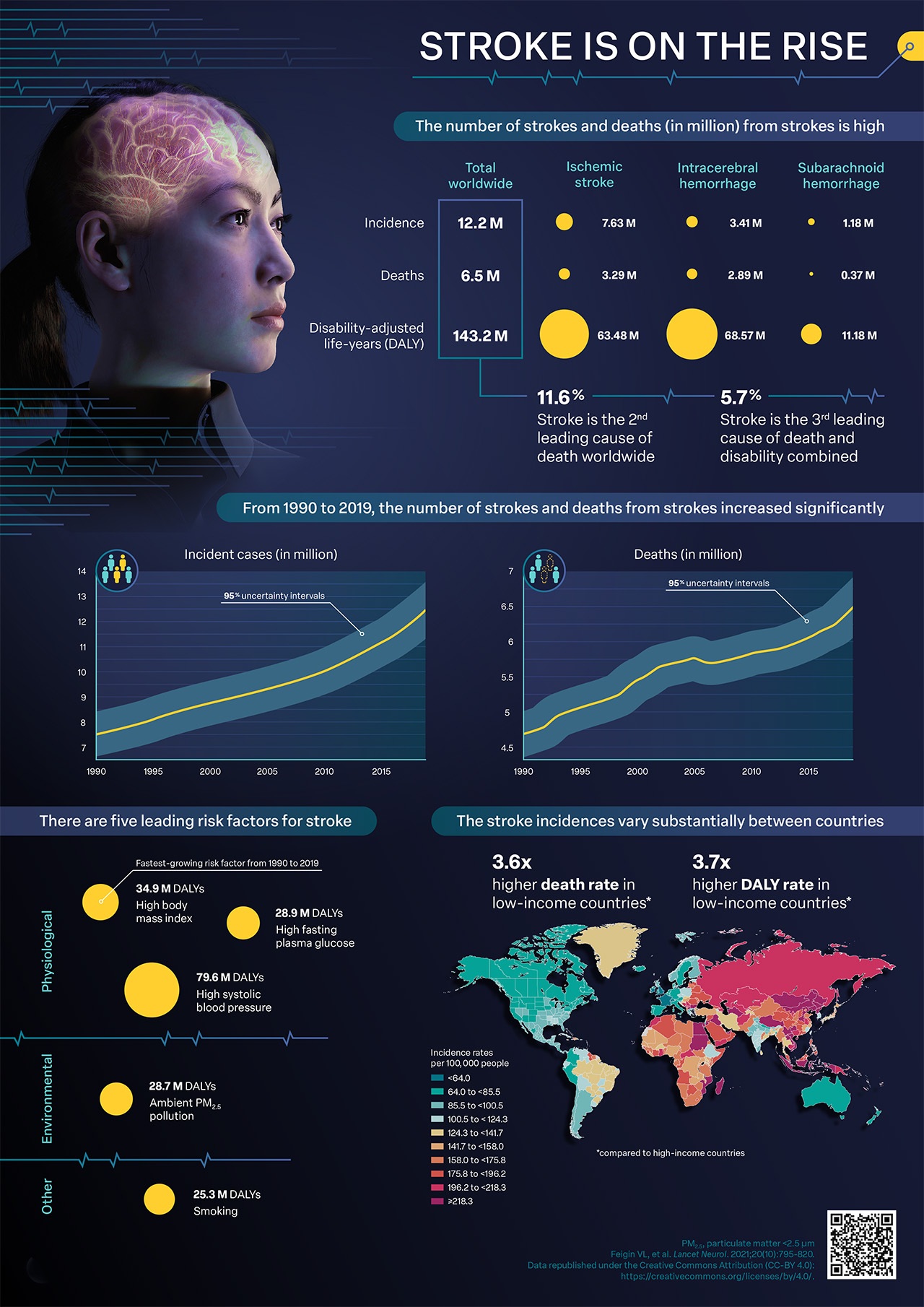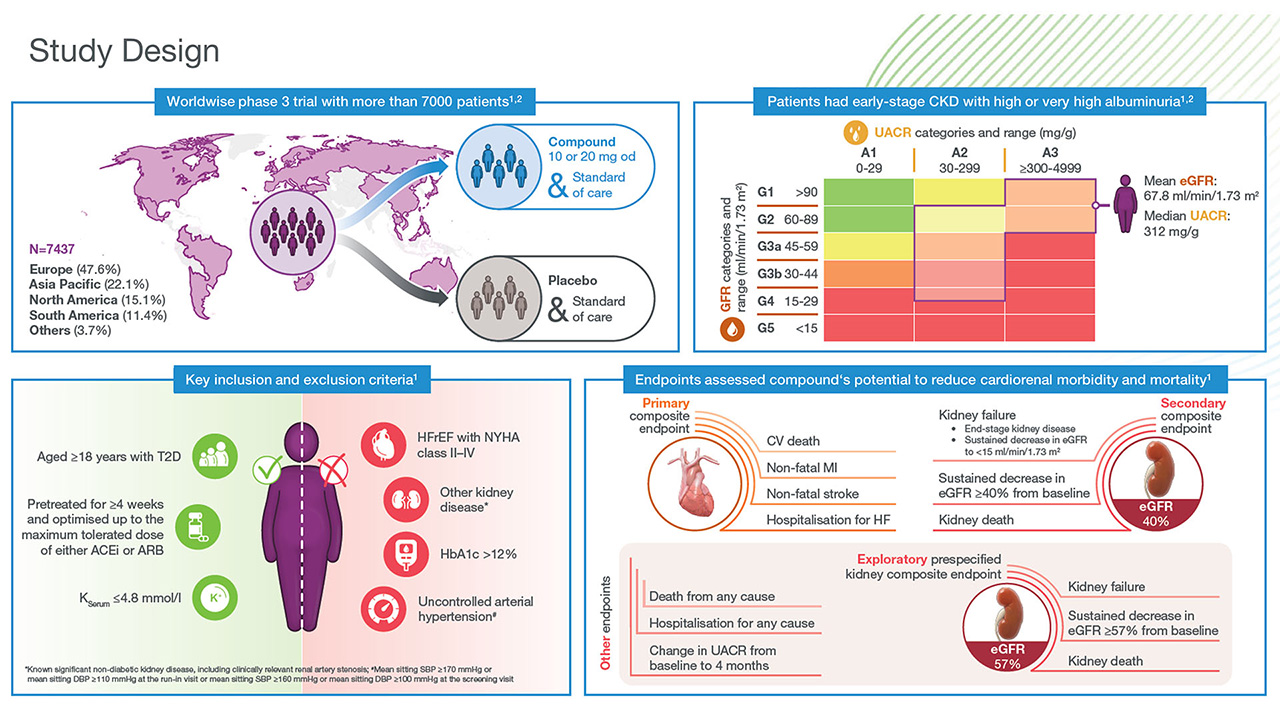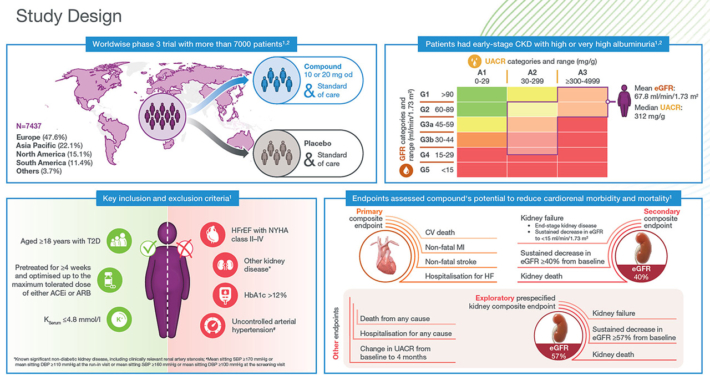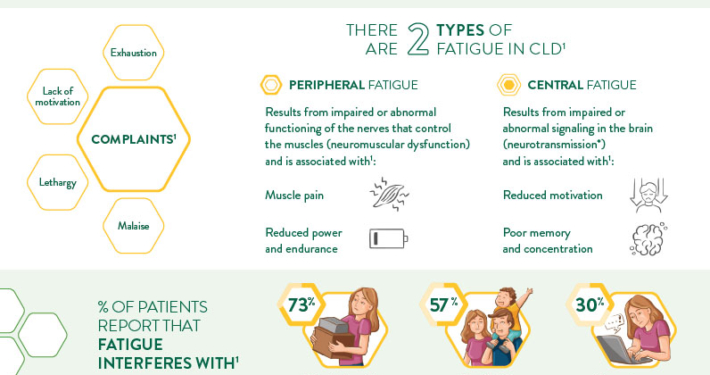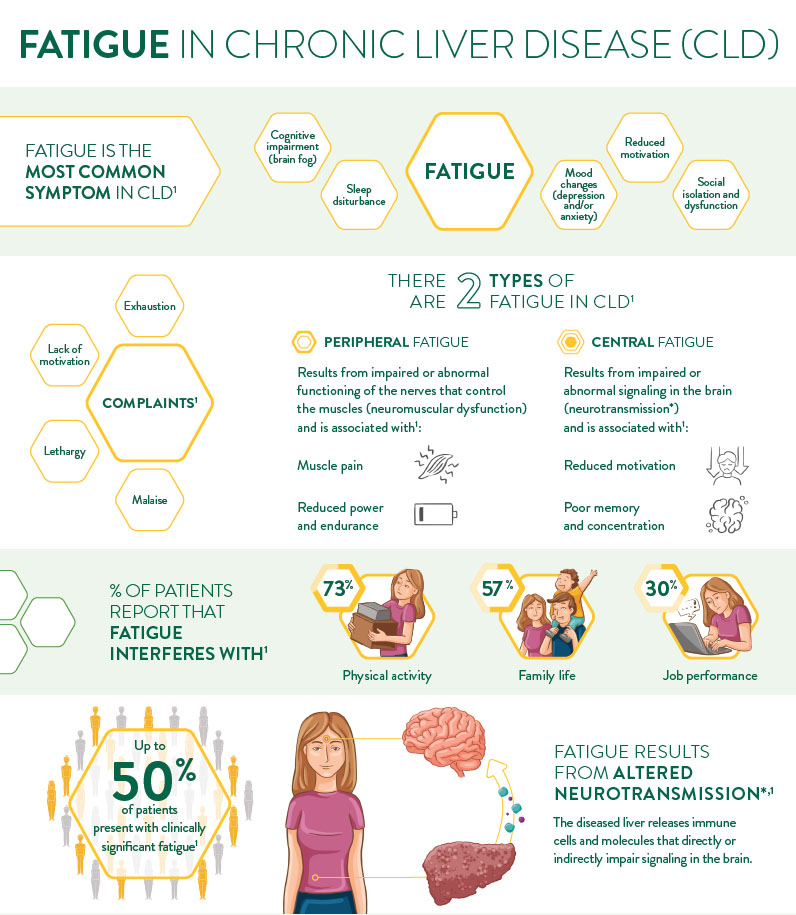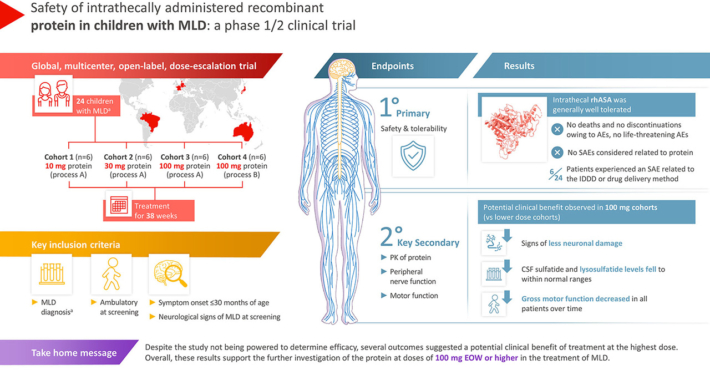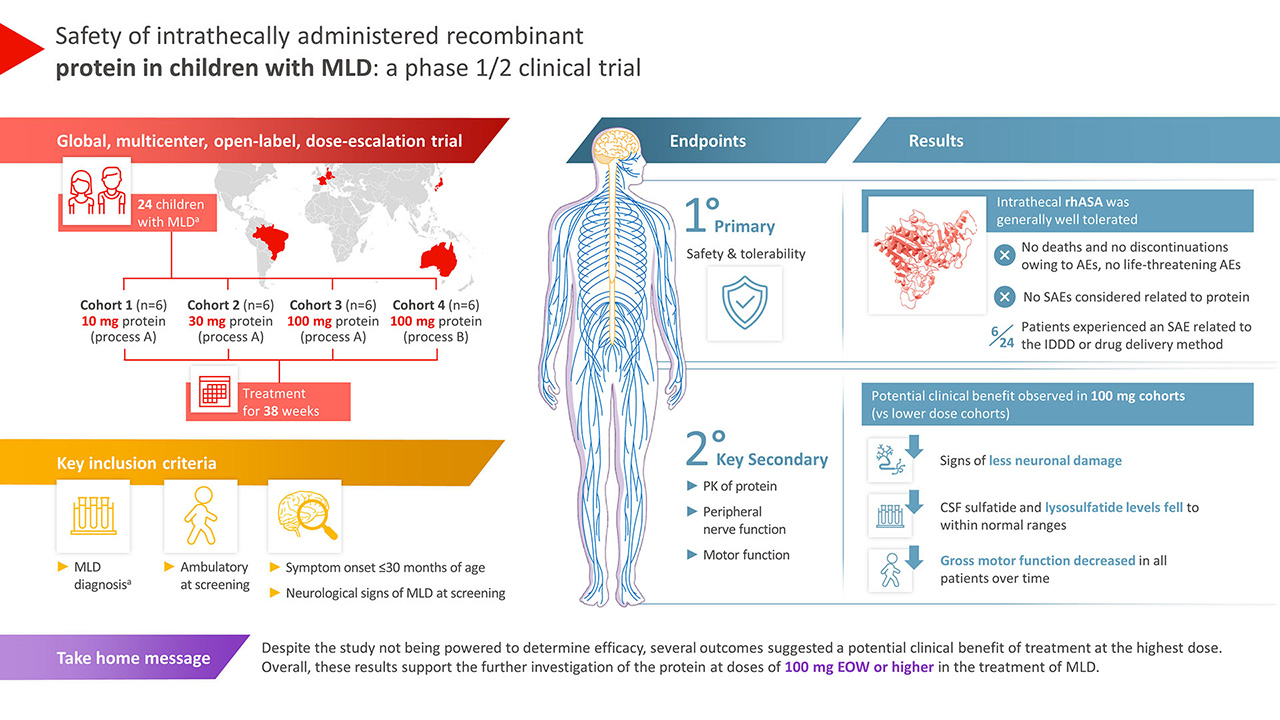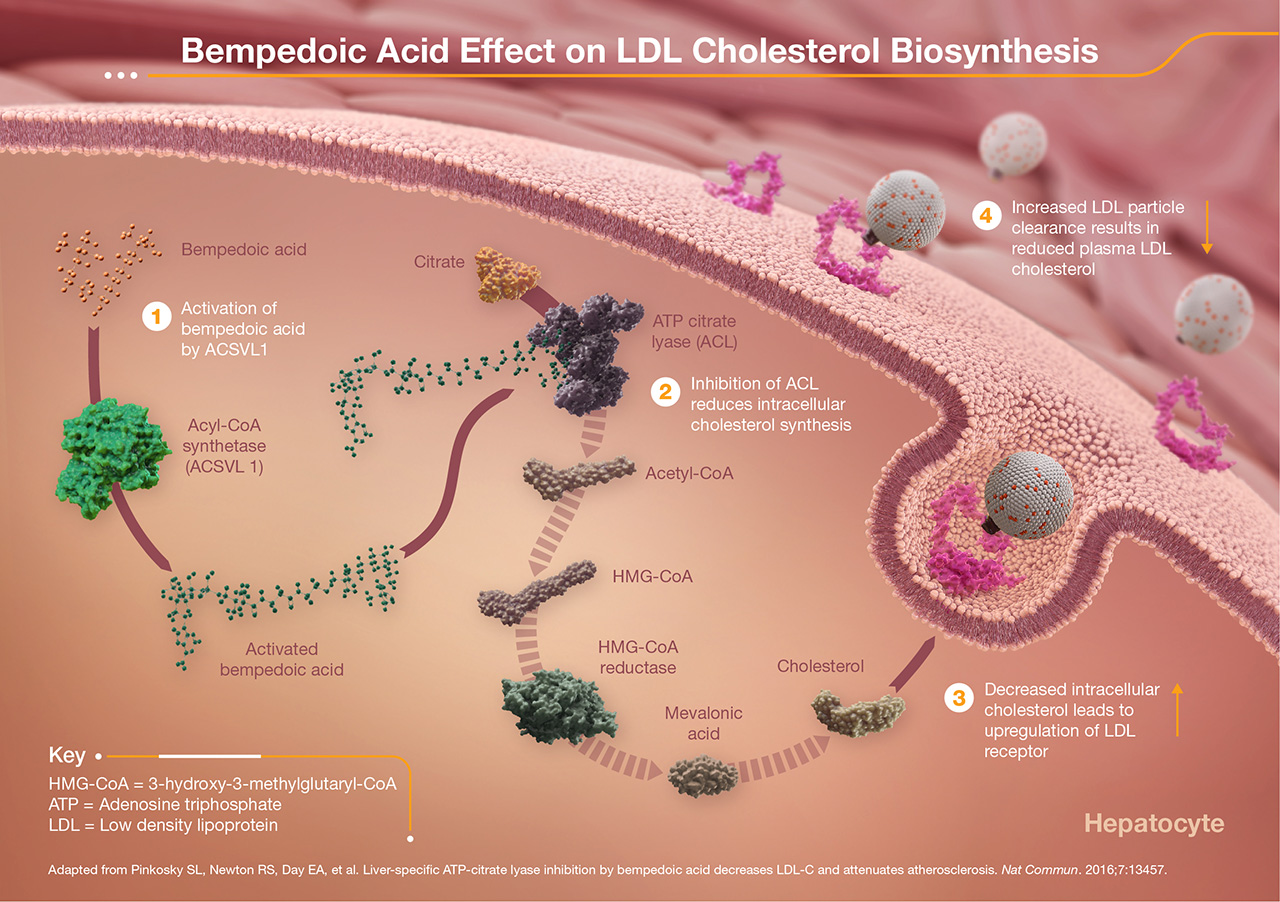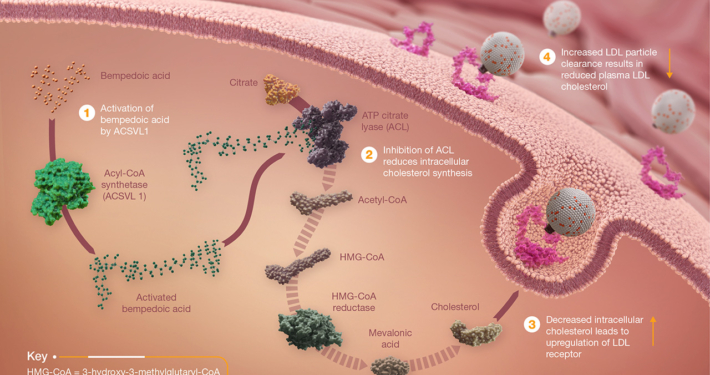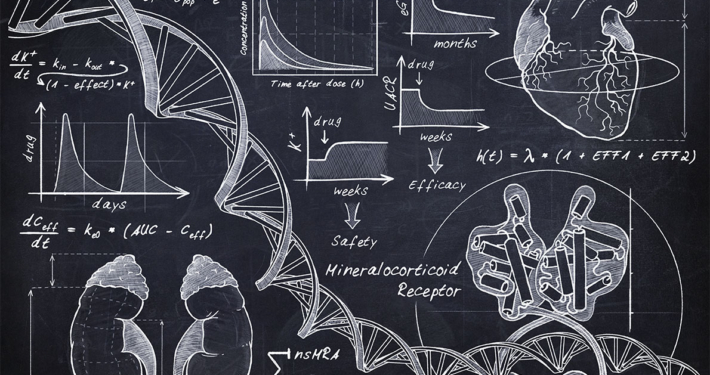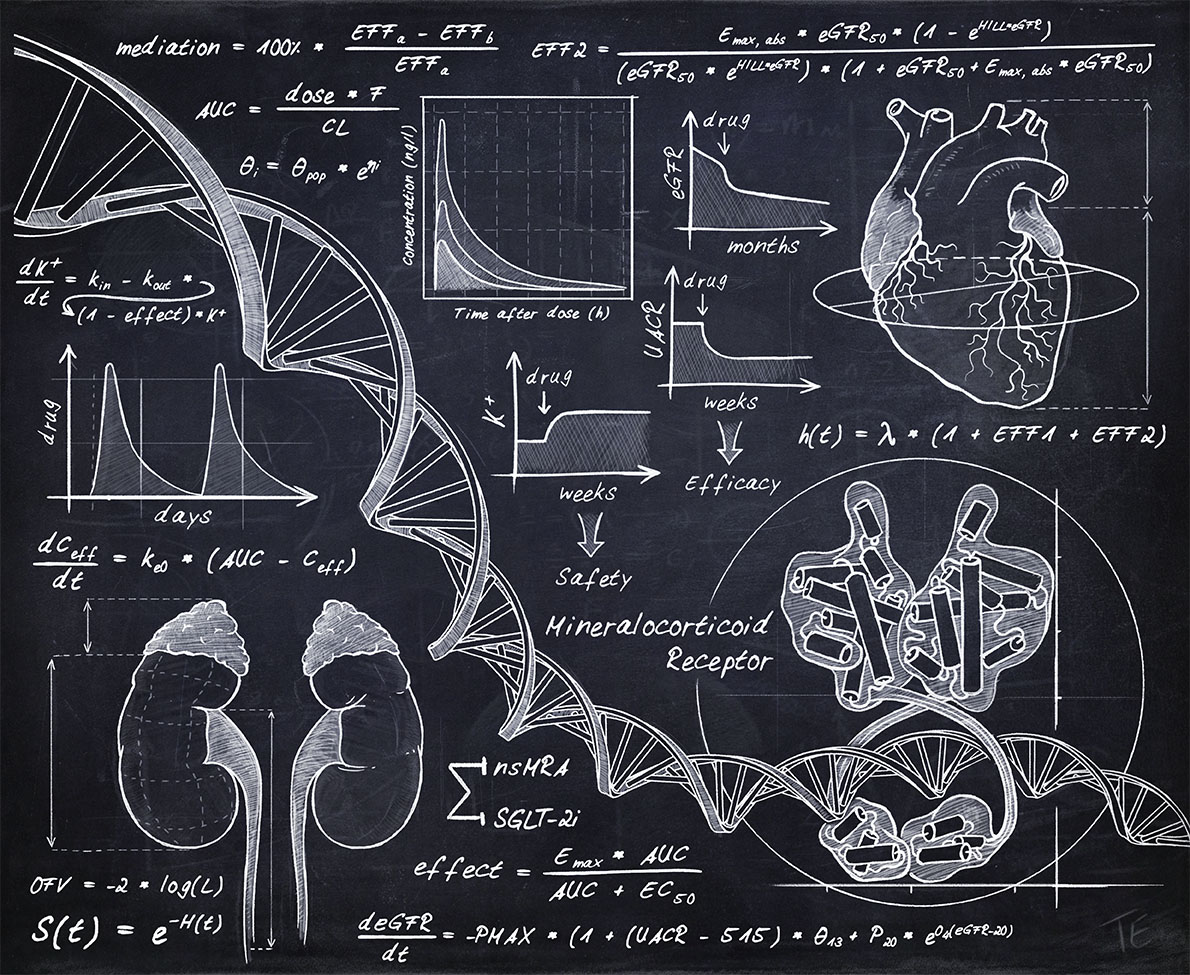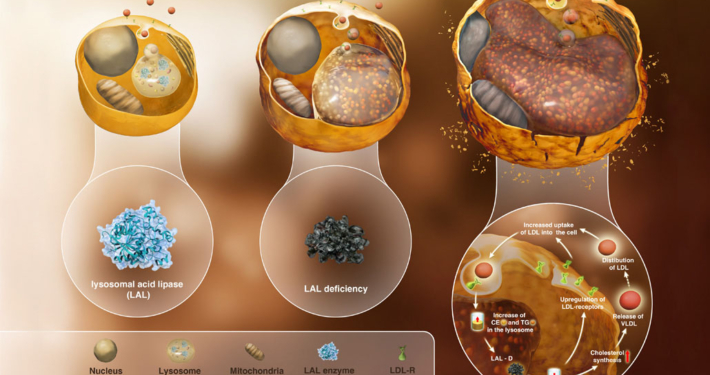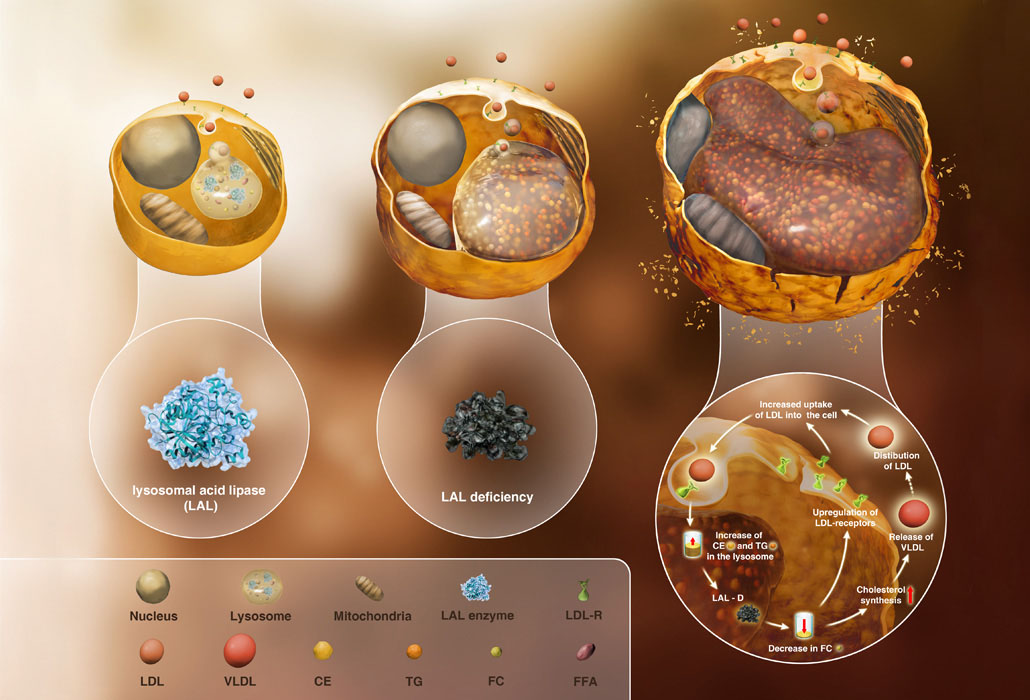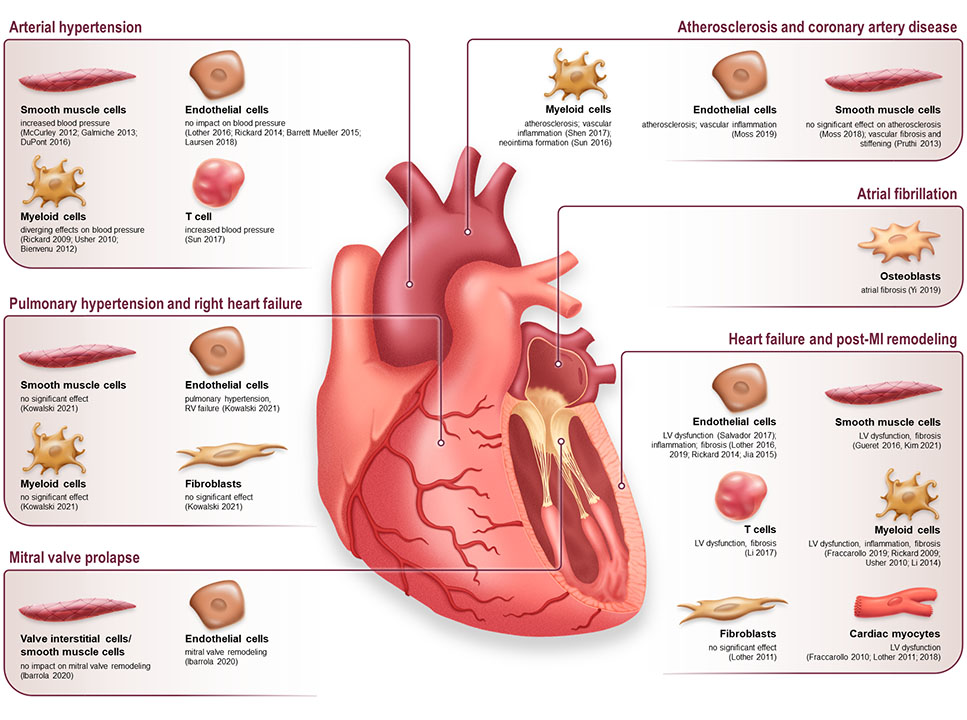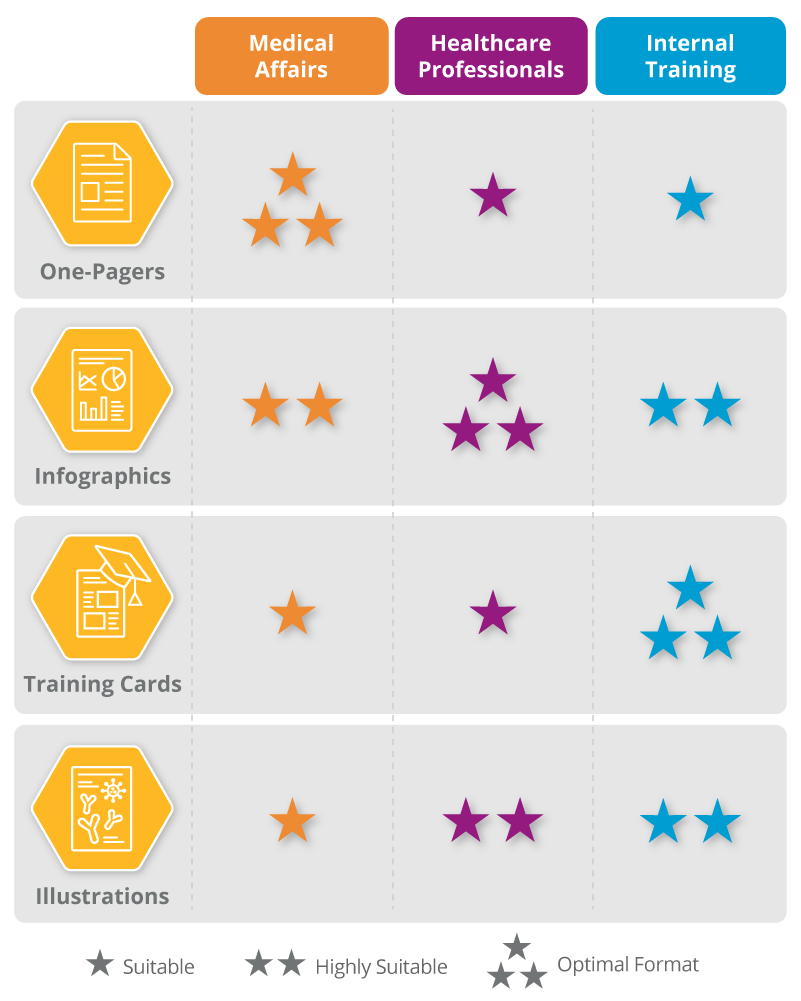One Page, many meanings: choosing between infographics, training cards, one-pagers, and illustrations
The terms “infographic,” “training card,” “one-pager,” and “illustration” are frequently used interchangeably in pharmaceutical communications, yet each represents a distinct format with specific characteristics and purposes. This lack of precision in terminology creates real challenges: medical affairs teams request “infographics” when they need detailed scientific summaries; MSLs receive dense text documents when they need quick-reference tools; and congress materials lack the visual impact needed to engage HCPs in a busy environment.
These mismatches between format and purpose not only waste resources but also diminish the effectiveness of scientific communication. When the wrong format is selected, even the most scientifically accurate content may fail to achieve its communication objectives.
This article provides clear definitions and applications for each of these one-page formats, offering a practical framework for selecting the right approach based on your specific communication objectives and audience’s needs. By understanding the distinct characteristics of each format, you can ensure your scientific messages are presented in the most effective way possible.
The visual spectrum: from data to art
These one-page formats exist on a spectrum from data-intensive to visually impressive. Where a format falls on this spectrum determines its effectiveness for specific communication objectives:
Understanding where your communication needs fall on this spectrum is the first step in choosing the right format for your specific project.
Format deep dive: characteristics and best uses
One-pagers: scientific summaries and reference tools
One-Pagers prioritize comprehensive scientific information with a text-forward approach supported by strategic visual elements. Unlike more visually dominant formats, they maintain a formal tone and highly structured presentation with clear sections that mirror scientific papers. The one-pager format excels at providing thorough yet concise information that serves as an authoritative reference point. They particularly excel at communicating complex scientific concepts where precision and completeness are paramount, while still being more accessible than full scientific publications. By balancing scientific rigor with brevity, one-pagers become valuable tools for teams who need accurate, complete information without navigating lengthy documents.
Best used for:
- Publication overviews
- Clinical trial summaries (graphical abstracts)
- Medical information responses
- Internal scientific briefings
Infographics: data visualization for complex scientific concepts
Infographics blend scientific data with engaging visuals to make complex information accessible and digestible. They strike a careful balance between data presentation and visual elements, typically incorporating multiple visualization techniques—charts, tables, diagrams, and integrated illustrations—that work together to tell a coherent scientific story. What distinguishes a well-designed infographic is its systematic organization with a clear information flow that guides the reader through the content logically. When executed effectively, infographics transform abstract data into meaningful insights that resonate with healthcare professionals who have limited time to absorb information.
Best used for:
- Presenting clinical trial results
- Explaining disease state and epidemiology
- Comparing treatment options
- HCP detailing materials
Training cards: knowledge retention and application
Training Cards serve as cognitive bridges between comprehensive training and real-world application. Their defining characteristic is concision—they distill complex information into 5-7 essential points that field teams can quickly reference and recall. Unlike other formats that may prioritize comprehensiveness, Training Cards focus on actionability and memory retention through clean, simple design principles. They transform what might be a 50-slide presentation or hour-long e-learning module into a single reference tool that reinforces key messages when they are needed most. This format acknowledges the reality that in time-sensitive situations, having immediate access to core information is more valuable than comprehensive detail.
Best used for:
- Field reference materials for MSLs
- Post-training reinforcement
- Quick preparation before HCP meetings
- Key message alignment
Illustrations: conceptual understanding and engagement
Illustrations take a distinctly visual approach to communicating scientific concepts, prioritizing conceptual clarity over data presentation. They employ artistic elements to simplify complex processes, making abstract ideas tangible and memorable. Unlike data-heavy formats, illustrations use minimal text, letting the visual narrative carry the communication burden. Their power lies in making difficult concepts immediately understandable through visual metaphors and carefully designed representations. By stripping away extraneous details and focusing on core concepts, illustrations make complex scientific processes accessible even to audiences with varying levels of scientific background, creating those “aha” moments that facilitate deeper understanding.
Best used for:
- Mechanism of action visualizations
- Anatomical depictions
- Patient journey maps
- Disease progression visualizations
Audience considerations: the who shapes the how
The target audience significantly influences which format is most appropriate:
Internal training (MSLs, field teams)
Field teams operate in dynamic environments where information must be quickly accessed and applied. Their primary needs center on knowledge retention and practical application—they need information they can recall and use in conversations with healthcare professionals. Training cards and focused infographics serve these needs effectively by providing clear, digestible information that can be quickly reviewed before meetings or referenced during discussions. The key consideration for this audience is actionability—how easily can the information be translated into meaningful conversations?
Medical affairs teams
Medical affairs professionals require depth and scientific accuracy while still maintaining efficiency. They need to quickly understand comprehensive information that they can confidently share with healthcare professionals and internal stakeholders. One-pagers and detailed infographics provide the scientific rigor and completeness this audience requires, while organizing information in a way that facilitates rapid comprehension. For medical affairs, the balance between comprehensive information and accessibility is crucial—materials must be thorough without requiring excessive time to process.
Healthcare professionals
HCPs operate under significant time constraints while needing clinically relevant information. Their primary concern is efficiency—how quickly can they extract meaningful insights that apply to patient care? Infographics and illustrations serve this audience particularly well by respecting their time limitations while still conveying key scientific concepts. The design for HCPs must prioritize clinical relevance and immediacy, creating materials that communicate essential information in moments rather than minutes.
Best practices for format selection
When deciding which format best suits your communication needs, consider:
- Purpose first: What action or understanding should result from this communication?
- Audience analysis: who will use this information and in what context?
- Content complexity: how technical is the information being conveyed?
- Usage environment: where and how will this material be accessed?
- Longevity needs: is this for long-term reference or immediate impact?
Decision framework
Use this simple decision framework to guide your format selection:
- If your goal is knowledge retention and application → Training card
- If your goal is comprehensive scientific reference → One-pager
- If your goal is data visualization and education → Infographic
- If your goal is conceptual understanding and engagement → Illustration
By matching format to specific communication objectives, teams can significantly enhance the effectiveness of their scientific messaging while streamlining development and review processes.
These formats can complement each other within broader communication strategies, but each individual deliverable should be designed with a clear understanding of its specific purpose and audience. Matching format to function transforms complex scientific information into its most accessible, impactful form—whether that means facilitating quick recall of key messages, providing comprehensive scientific context, visualizing complex data, or conceptualizing difficult mechanisms.
Precision in format selection ultimately translates to precision in scientific communication—ensuring that the right information reaches the right audience in the right way.

